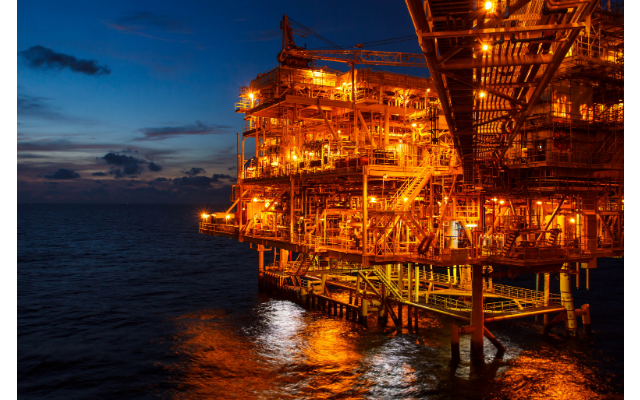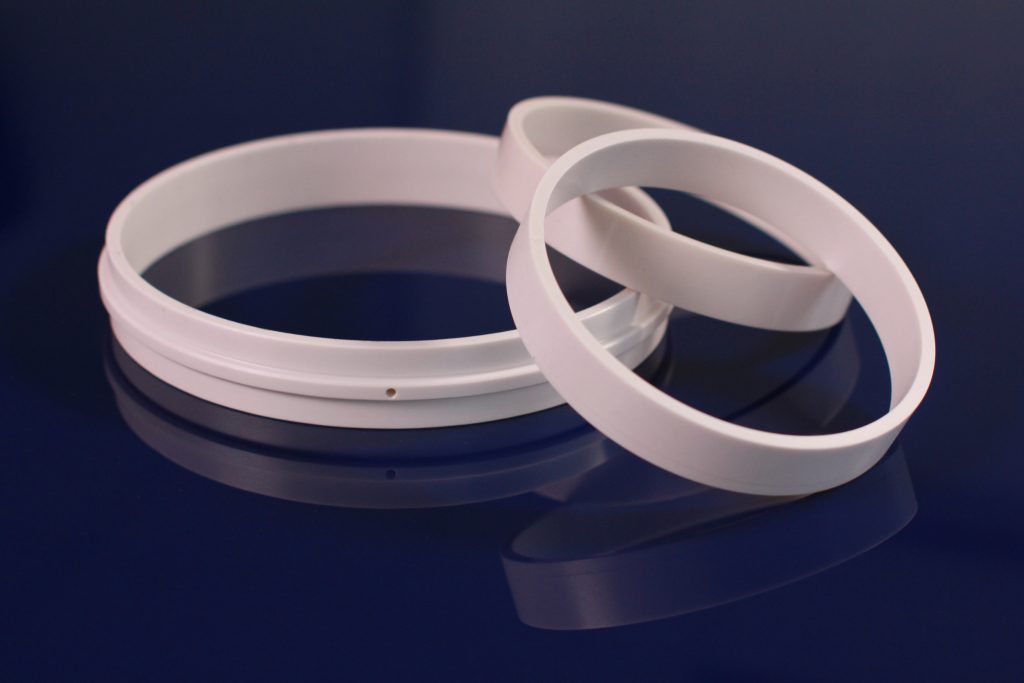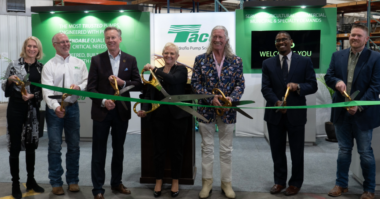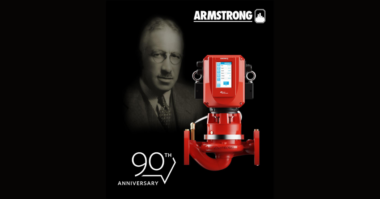Contributor: Morgan Advanced Materials
Ray Mouw, Business Development Manager at Morgan Advanced Materials’ Technical Ceramics business, explains why magnesia stabilised zirconia ceramic components will be vital for pumps that work in harsh environments, such as oil & gas, and crude oil extraction.
It goes without saying that crude oil is a valuable, or perhaps more accurately an invaluable product to all of us globally. The unrefined petroleum is pumped from reserves deep underground and by the barrel load, all day, every day.
Our dependence on this product (which is processed into a variety of fuel sources and commodities like jet fuel, petrol and diesel) has been quantified by a market intelligence report from Beroe.
In terms of demand and supply, the global fuel oil supply stands at 92.7 Mbpd (Million barrels per day), while the global fuel oil demand stands at 98.18 Mbpd. Demand is expected to increase, with a compound annual growth rate (CAGR) of 1.8 percent, until 2020. For all the efforts being put into renewable and alternative energy sources, the reliance on crude oil will not go away any time soon.
It is clear that investment, innovation and operational best practice must continue into the extraction of crude oil. Otherwise, supply slows down and the price per barrel of crude oil then increases due to the imbalance.
A key component that helps to keep supply up, are pumps. Unlike the slick and smooth products that it is turned into, crude oil is a petroleum composed of hydrocarbon deposits that ranges in viscosity, and contains oil, water and sand (often as the wells dry out increasingly) in its natural form.
Therefore, the pumps undertaking the extraction need to be durable and able to withstand the harsh, abrasive sandy oil. The first challenge is ensuring these costly pieces of equipment have a long lifespan, as only then can true value be achieved.

Multistage Centrifugal pump retrofitted with Ceramic wear part. Image Courtesy of United Pumps Australia
Striking it rich with heavy duty pumps
As you’d expect, pumps on oil rigs are an expensive outlay. Not only are there energy costs to run the pump, but the capital and maintenance costs are high.
Typically, a ‘clean oil’ pump – that is, a pump which is pumping purer crude oil – will last ten years between overhauls. However, with a sandy, dirtier crude oil, the pump life deteriorates to as little as one year.
The reason for these high maintenance costs is largely down to the erosion caused on the impeller shafts and wear rings (from the sand in the crude oil). It is the rapid wear through the tight wear ring clearance points that determines when the pumps are overhauled.
The materials used to construct these parts are various grades of metal often coated with wear resistant sprays. When pumping, pressures range from 2,100kpa during suction up to 15,000kpa during discharge. These pressures, combined with the rough surfaces of the sand, will quickly erode wear rings and bearings. In turn, the pump becomes less effective and inefficient.
While it may be easy to accept that this is just the norm of how heavy-duty pumps are constructed, there is an alternative to using hardened stainless-steel components. Parts made from magnesia stabilised zirconia (also known as MgPSZ) ceramic are fast becoming the preferred alternative.
Of the various grades of zirconia ceramic available on the market, it is the magnesia partially stabilised grade that is best suited to heavy duty pumps. Unlike other grades of zirconia ceramic, such as yttria stabilised zirconia, magnesia stabilised zirconia is the toughest, most reliable grade and doesn’t suffer from hydrothermal degradation – an important criterion in moist, elevated temperature environments.
Morgan Advanced Materials’ Nilcra® Zirconia is one such grade of magnesia stabilised zirconia and is a robust and simple to use replacement material for applications where high wear rates occur. By using this type of zirconia ceramic, the time between overhauls for a sandy crude oil pump can increase from the typical one-year lifespan up to four to six years instead.
Indeed, an example of this bettered performance has been seen by Morgan when comparing a refurbished eight-stage centrifugal pump, fitted with Nilcra® Zirconia wear rings and shaft bushings, across a four-year period.
OEM wear rings fitted to the pump’s impeller shaft were made from 420 stainless-steel 270-300 BHH and 420 stainless-steel 350-400 BHH. These wear rings lasted 12-15 months in a sandy well service, before requiring a total overhaul.
Meanwhile, wear rings made from Nilcra® Zirconia were also fitted to a different section of the impeller shaft. Findings showed a huge decrease in the wear on the magnesia stabilised zirconia rings in comparison to the spray-coated stainless-steel rings. The life of the pump was extended by approximately four times as a result, with vastly reduced downtime and maintenance costs resulting in an increase to production.
A Slicker Operation
Just off the south coast of Australia is where magnesia partially stabilised zirconia ceramics have proven to be a huge success story, following Morgan’s consultation.
In this region up to 480,000 barrels, or 76,800m³ of crude oil is pumped per day, with nearly 40 pumps in use across the site since the 1990’s.
However, the operation and maintenance of the pumps is costly. Sand content within the crude oil in the wells has been steadily increasing as oil reserves have been dwindling down over time. It was found that each pump would only be able to provide roughly one year of service before needing critical maintenance from wear and erosion.
Crucially, wear was happening in four key areas of the pumps. Namely, these were the throttle bush, case separating ring, throat bush and impellor wear ring, which were made from hardened stainless steel or coated stainless steel.
Following the site operator’s consultation with Morgan Advanced Materials, these parts were replaced with Nilcra® Zirconia, with only slight modifications to the internal corner radii to reduce corner stresses and facilitate diamond grinding wheels. Over 40 pumps have been retrofitted, and lifespan for each pump has increased from the typical one-year lifespan to an estimated four to six years instead.
Energy to burn
Nilcra Zirconia parts are not just beneficial for reducing maintenance costs and extending the life of the pump. The other side of running a pump is managing the operating costs. When stainless-steel and cast-iron components wear, the sealing gaps increase. This reduces the pump’s efficiency – so they need to work longer to pump the same amount of product – or can’t meet the desired pump pressure. In other words, the pump needs more energy to pump the same amount of oil through. Ultimately, becoming less and less efficient.
The energy to run a pump is typically between 40 and 70 percent of the lifecycle costs – so maintaining sealing gaps and pump efficiencies is important. When pump efficiencies drop below the desired threshold, pumps are taken offline and overhauled – another costly and time-consuming exercise as many tens of thousands of dollars are wasted (per pump per overhaul).
Perhaps more importantly though is the cost of downtime and loss of production once the pump needs to be decommissioned and overhauled. In some cases, a pump can produce AUD $740 per minute, making it easy to see why operators don’t want downtime to be a regular occurrence.
Zirconia versus Ferobestos – Swelling at Sea
Another common material that partially-stabilised zirconia stacks up well against is ferobestos. Ferobestos is a fibre reinforced composite material and is often chosen to create the sleeves or bearings on heavy duty pumps, as they provide an excellent seal with minimal leakage. However, ferobestos, is subject to moisture absorption, causing the parts to swell and increase running friction. This then affects the pump performance and causes rapid wear on both the mating parts.
Magnesia partially-stabilised zirconia does not suffer from this issue, as it is a solid monolithic material. This also means it is not subject to hard abrasive wear particles embedding into it and scoring the mating shaft, which can be a very expensive repair exercise.
One such instance that has been noted by an operator is a pump with 2″ shaft for waste/holding dam pumps, in Longford Australia. An open vane pump in the bottom with ferobestos sleeves were only lasting between one to two months due to swelling and fast wear rates.
Following consultation with Morgan, the sleeve material was changed to Nilcra® Zirconia. The lifespan on these parts is now greater than four years, which has vastly reduced downtime and maintenance costs.
Pumped Up Parts, Pumped Up Performance
An additional benefit of working with Nilcra® Zirconia is that the ceramic, originally dubbed ‘Ceramic Steel’, can in most cases use the same drawing and tolerances of current metal parts. Thus, there is no need for major redesigns and approvals, it is essentially like-for-like. However, the parts can be modified quite easily if required.
Another case Morgan encountered was with a centrifugal pump, pumping ammonium carbonate slurry. The temperature range of the slurry was between 45°C and 85°C, and the shaft speed was running at 1,500 RPM, with water to lubricate the pump.
The pump originally had metal shaft sleeves, but the life of the sleeve was only five weeks – a ceramic coating on the pump had a lifespan of eight to ten weeks. Operators of the pump were still finding downtime substantial, maintenance time high and costly, and production was low.
After replacing the shaft sleeves with Nilcra® Zirconia ones the sleeves lasted 12 months, a significant ten-fold life increase.
Built to Last
As crude oil continues to be a key fuel source for the world, it pays to keep the pumps in good working order and increase operating efficiency.
Only by lowering the lifecycle cost of pumps and maintaining production can operators truly realise better value. Nilcra® Zirconia parts go a long way into achieving that.
 For more about Morgan Advanced Materials and Nilcra® Zirconia, please visit http://www.morgantechnicalceramics.com/en-gb/products/zirconia-ceramic-components/oil-and-gas-products/
For more about Morgan Advanced Materials and Nilcra® Zirconia, please visit http://www.morgantechnicalceramics.com/en-gb/products/zirconia-ceramic-components/oil-and-gas-products/
About Morgan Advanced Materials
Morgan Advanced Materials is a global materials engineering company which designs and manufactures a wide range of high specification products with extraordinary properties, across multiple sectors and geographies.
From an extensive range of advanced materials, we produce components, assemblies and systems that deliver significantly enhanced performance for our customers’ products and processes. Our engineered solutions are produced to very high tolerances and many are designed for use in extreme environments.
The Company thrives on breakthrough innovation. Our materials scientists and applications engineers work in close collaboration with customers to create outstanding, highly differentiated products that perform more efficiently, more reliably and for longer.
Morgan Advanced Materials has a global presence with over 10,000 employees across 50 countries serving specialist markets in the energy, transport, healthcare, electronics, petrochemical and industrial sectors. It is listed on the London Stock Exchange in the engineering sector.






Comments